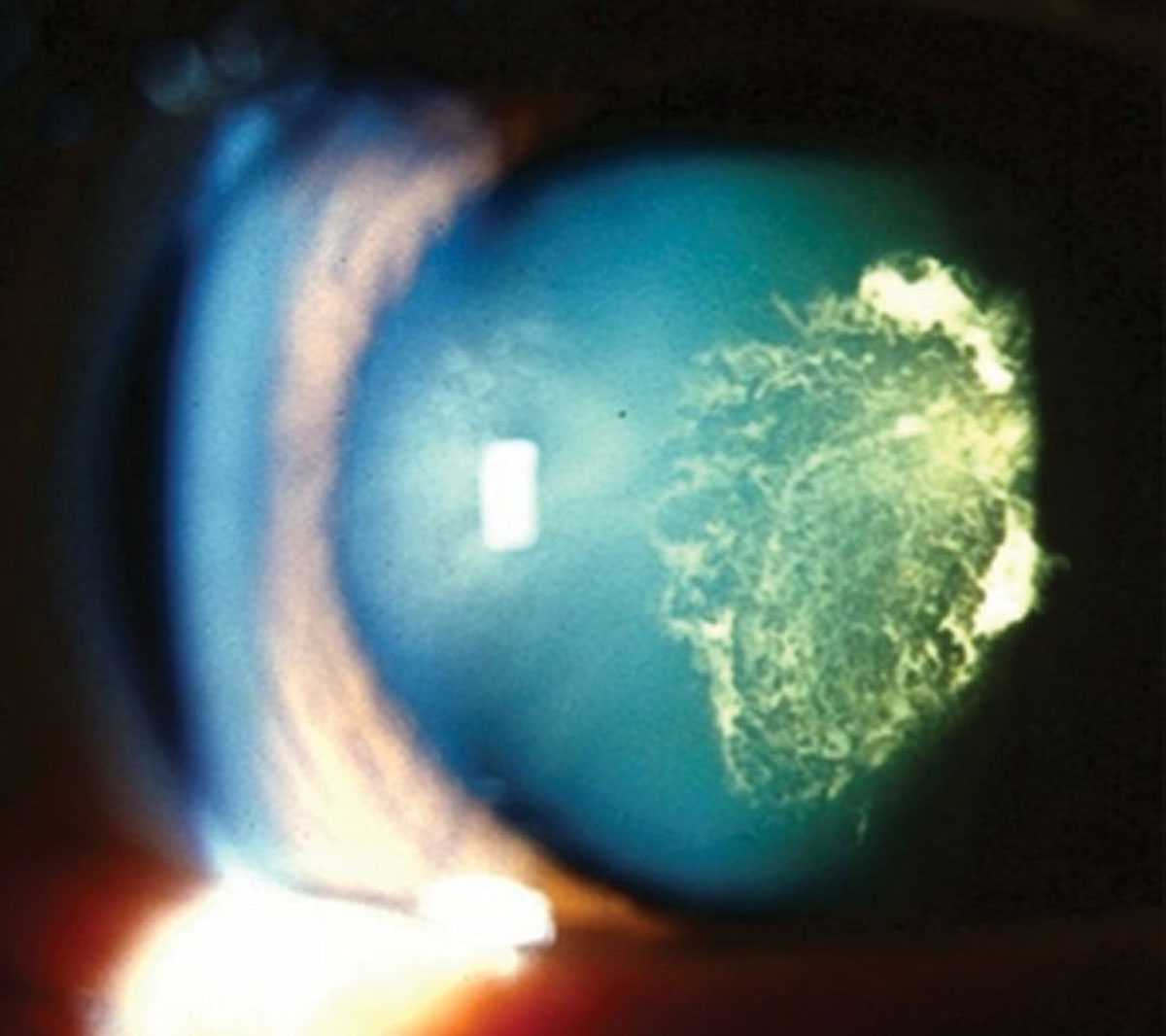 |
| Deep learning helps quantitatively classify cataract severity. Photo: Julie Tyler, OD. Click image to enlarge. |
Automated approaches to cataract diagnosis and classification have advantages, including accessibility and accuracy. As technology continues to evolve, researchers are finding more ways to use these approaches. In a recent study, a team used data from the Age-Related Eye Disease Study (AREDS) to develop and evaluate deep learning models to perform automated diagnosis and quantitative classification of age-related cataract, including all three anatomical types, from anterior segment photographs.
A total of 18,999 photographs (6,333 triplets) from longitudinal follow-up of 1,137 eyes (576 AREDS participants) were used. Deep learning models were trained to detect and quantify nuclear cataract (NS; scale 0.9-7.1) from 45° slit lamp photographs and cortical (CLO; scale 0-100%) and posterior subcapsular (PSC; scale 0-100%) cataract from retroillumination photographs. The performance was compared with that of 14 ophthalmologists and 24 medical students.
The deep learning framework achieved automated and quantitative classification of cataract severity with a high level of accuracy for all three types of age-related cataract. A subset of the full test set was designed as a very challenging test set, by deliberately enriching for positive cases of CLO and PSC. Performance remained high for the two most common types NS and CLO and remained moderately high for PSC. The authors noted this may relate to the lower number of positive cases of PSC in the training set, which reflects the lower prevalence in the population, the authors noted.
“Importantly, the performance of the deep learning framework was significantly superior to that of ophthalmologists for the two most common types of cataract (NS and CLO),” the authors explained. “For the least common type (PSC), the accuracy was similar to that of ophthalmologists and numerically superior to that of medical students. The performance was not markedly lower in eyes with smaller pupils. Indeed, for NS grading, accurate grading appeared possible irrespective of pupil size. This differed from the situation with human grading of NS, as ophthalmologist performance appeared to be worse in eyes with smaller pupils.”
Creating this framework can have a huge impact in the research domain, as well as increase the accessibility of cataract assessment globally, the authors noted, as the quantitative grading “may be valuable for applications where granular and accurate grading is required, such as interventional clinical trials, natural history studies and epidemiological studies.”
“Similarly, objectivity and consistency may be helpful in scenarios where these are important, e.g., for consistency between different studies,” they explained. “However, this quantitative grading can also be easily converted into one of multiple other grading systems, depending on the particular application, including less granular scales (e.g., NS 0-4+) often used in routine clinical practice.”
Keenan TDL, Chen Q, Agron E, et al. Deep learning automated diagnosis and quantitative classification of cataract type and severity. Ophthalmology. December 27, 2021. [Epub ahead of print]. |

